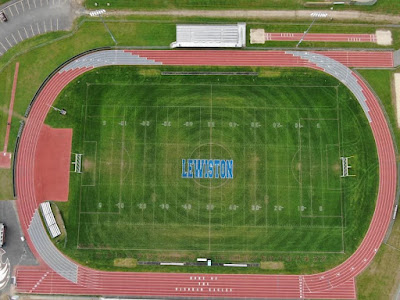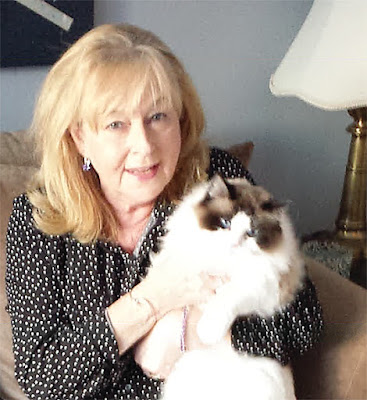The airwaves are busy over Raymond as a group of sixth-grade students prepare news reports on the latest developments at Jordan-Small Middle School (JSMS). Whether the young reporters and anchors are interviewing teachers, students, or staff, Jennifer Potter’s English Language Arts class is having fun while learning written and verbal communication skills through an innovative curriculum based upon the everyday tasks of broadcast journalists in their new school show, “What’s the News?”
“I was reflecting on his valuable experiences in middle school,” she said. “He loved using technology to create iMovies and news shows. I then started brainstorming how to bring broadcast news to the sixth grade at Jordan-Small.”
She mentioned the idea to Richey Vickers, Windham Middle School’s Instructional Technology Leader. He also wanted to create a news show at the middle school level, and they decided to work together.
“At the start of the unit, I posed the question to my students – ‘what is broadcast news, and how do we as viewers stay informed?’” Potter said. “We watched three short local news stories and analyzed their overall structure and how anchors transitioned between stories.”
After the students gained an understanding of broadcast journalism, the class brainstormed topics they were interested in reporting for JSMS. This activity helped students develop their critical thinking and writing skills and gave them a better understanding of how the news is created.
Each student journalist is assigned work based on their strengths and interests, whether it be as a news reporter or a behind-the-scenes creator.
Sixth grader, Miles Moreau is a news reporter and he interviewed Jed Bloom’s science class students about their rocket launch experiments.
“We reported on why some rockets went farther than others and why some didn’t go very far,” he said. “We learned that the rockets made of card stock and smaller nose cones went farther than the ones with printer paper and bigger nose cones. We had to try a lot of times to make the news story because we kept on messing up and saying the wrong words. We solved it by memorizing the script.”
Poppy Macijauskas, also a student in broadcast journalism, works on the animation part of the news.
“It took some time to finish my storyboard and start animating, but I created my first full-color animation, and I am very proud of that,” she said. “I am very excited about what I am doing next.”
Besides learning verbal and written communication skills, students acknowledge that they are learning much more.
Sixth grader Addy Elwell said that learning about the tasks involved with broadcasting taught her valuable lessons in unexpected ways.
“You must be educated on the topic you are learning about and speaking on,” she said. “I also learned about the five W’s (Who, What, When, Where and Why), and that really helped me while filming my part of the newscasting show.”
Vickers pointed out that students are also learning about time management.
“They are learning that they must prioritize and make choices on how to spend their time,” he said.
Other lessons learned have come from challenges faced and finding ways to overcome them. The use of technology has been one of those obstacles.
“Technology is always challenging when starting something new,” Vickers said. “Students have learned to record and edit their videos. This includes the visual and audio portions of the project. Sometimes speaking loudly or more clearly is what is needed and other times noise cancellation from the software is needed. Students are learning how to balance these to get the product they approve.”
Potter shared a moment when the student anchors of an hour-long news show filmed all their story transitions on a student's computer.
“Unfortunately, the computer was damaged, and they lost all their hard work,” she said. “The students were understandably disappointed, but they took it as an opportunity to learn an important life lesson – to always back up their work. This experience taught them the importance of being prepared and adaptable, and they emerged from it stronger and more resilient than ever before.”
Challenges or not, all lessons are lessons learned for a lifetime.
“From learning how to film and edit videos to collaborating with others, students are gaining a wealth of knowledge and experience that will serve them well in the future,” Potter said. “Not only will they be able to communicate their learning in an additional mode, but they will also have an infinite number of ways to be technologically creative, something that they will use in their personal and professional lives. By mastering these skills, students are setting themselves up for success and are better equipped to navigate the changing world of technology.” <
















